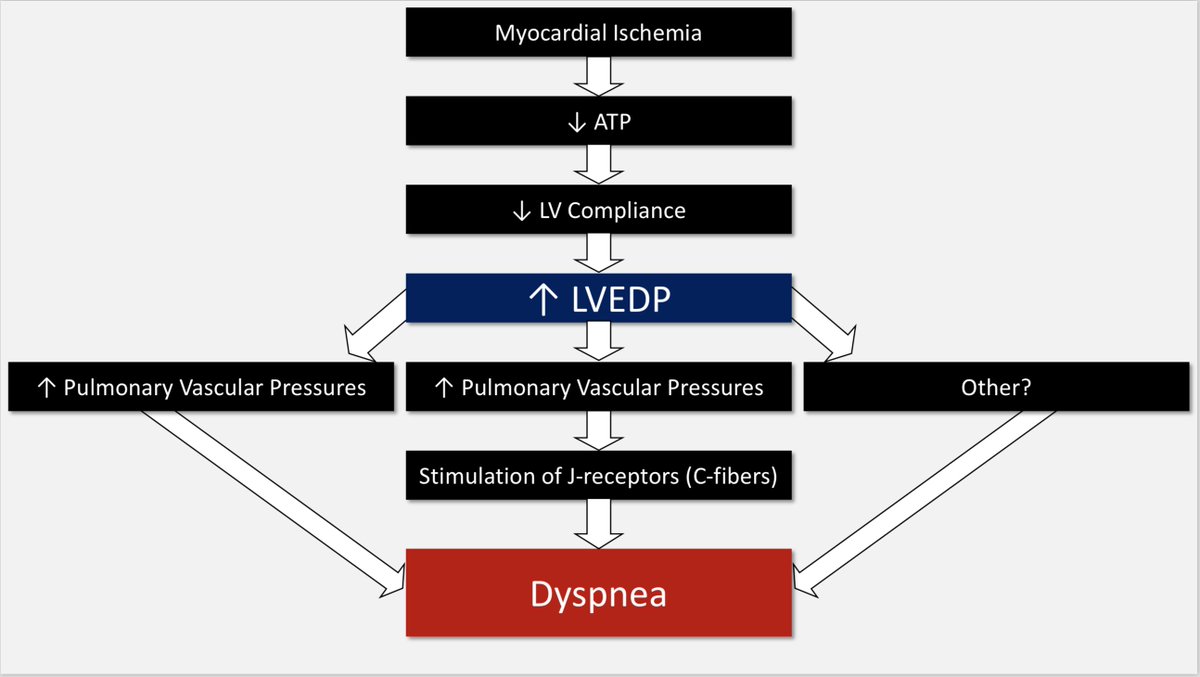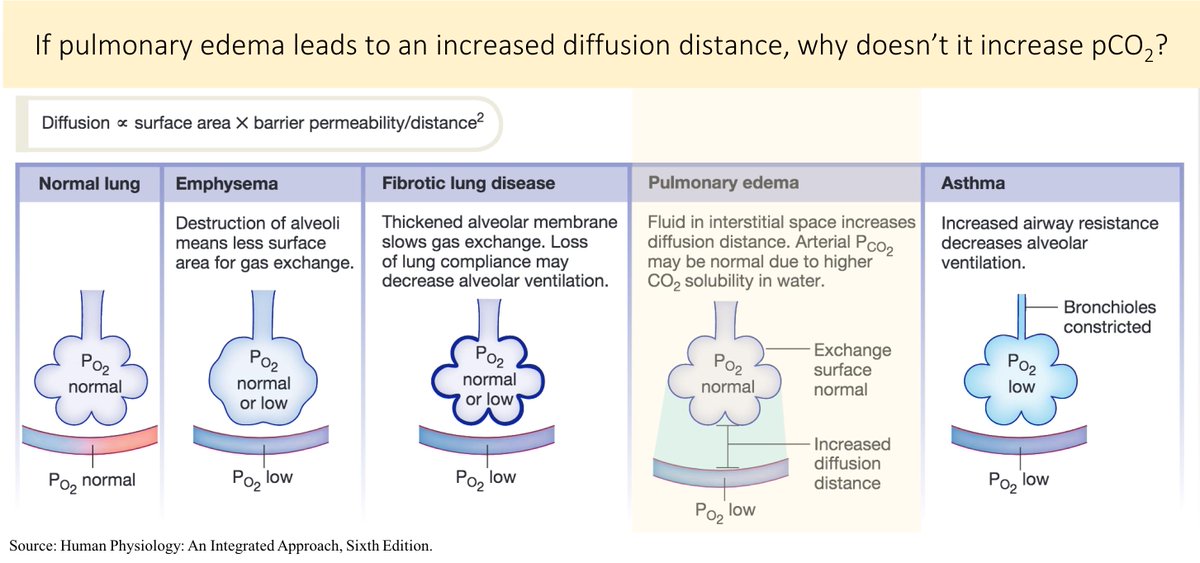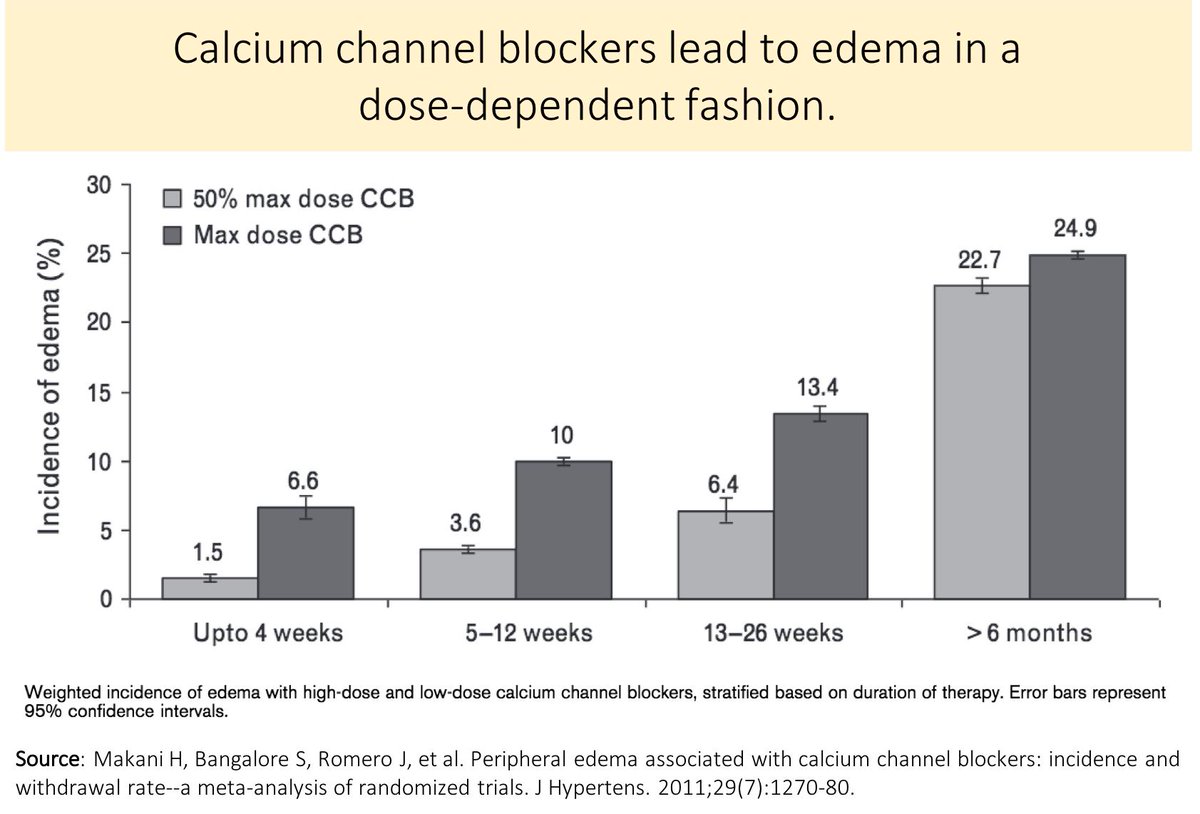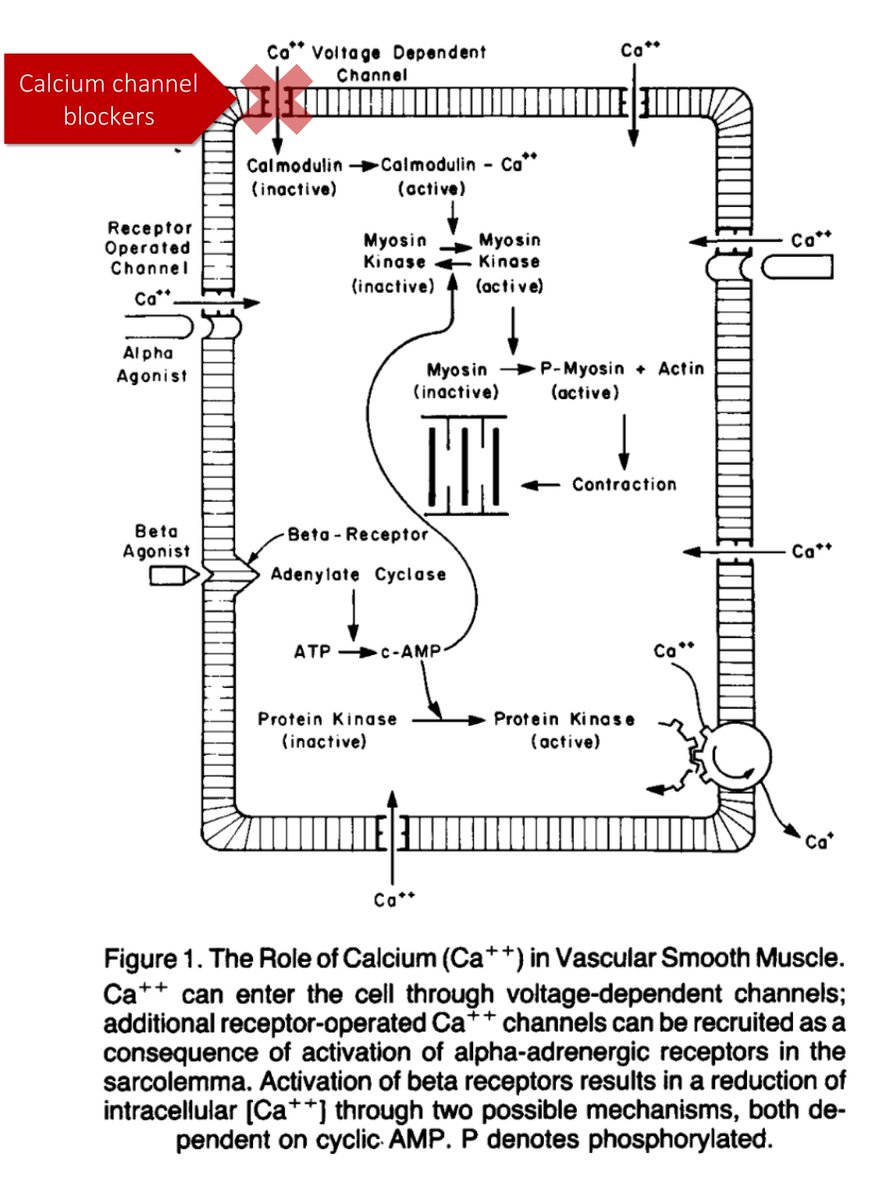Why would someone with myocardial ischemia (angina) experience dyspnea?
I only thought to ask this question after being a doctor for more than 10 years. They answer seemed obvious, so why bother giving it any thought?
Because pathophysiology isn't always obvious...
To start, imagine a first-year medical student asks: “What is the mechanism for dyspnea in a patient who has myocardial ischemia?”
What would you answer?
Let’s look at some cool experimental data. In 1962, Ross observed that during anginal episode patients consistently had an increase in LVEDP.
These findings were more fully described in an amazing a lecture given in 1969 and published in 1971.
heart.bmj.com/content/33/2/1…

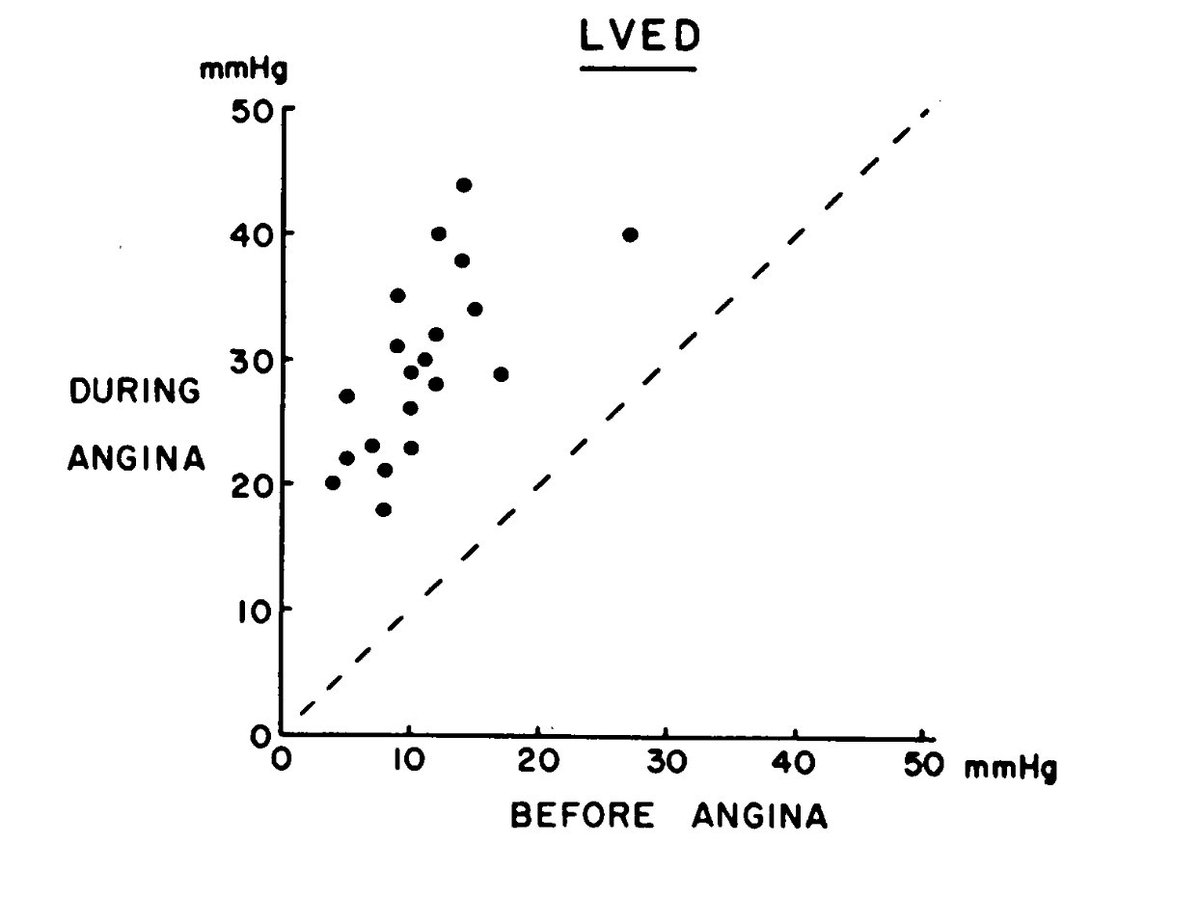
What could cause the increase in LVEPD?
Ross notes in his lecture that it could be from either increased LV volume or decreased LV compliance. Which do you think it is?
Recall that rigor mortis (stiffening of the muscle after death) is explained by depletion of ATP. Something similar is happening in the myocardium with depletion of ATP...
So, ischemia leads to depleted ATP, which leads to decreased compliance, which leads to increased LVEDP.
But, how does an increase in LVEDP lead to dyspnea? There are likely multiple mechanisms.
One mechanism was proposed in 1972 by Pepine and Weiner. They showed that the increase in LVEDP was associated with increased airway resistance and decreased lung compliance. This can lead to the sensation of dyspnea.
circ.ahajournals.org/content/46/5/8…
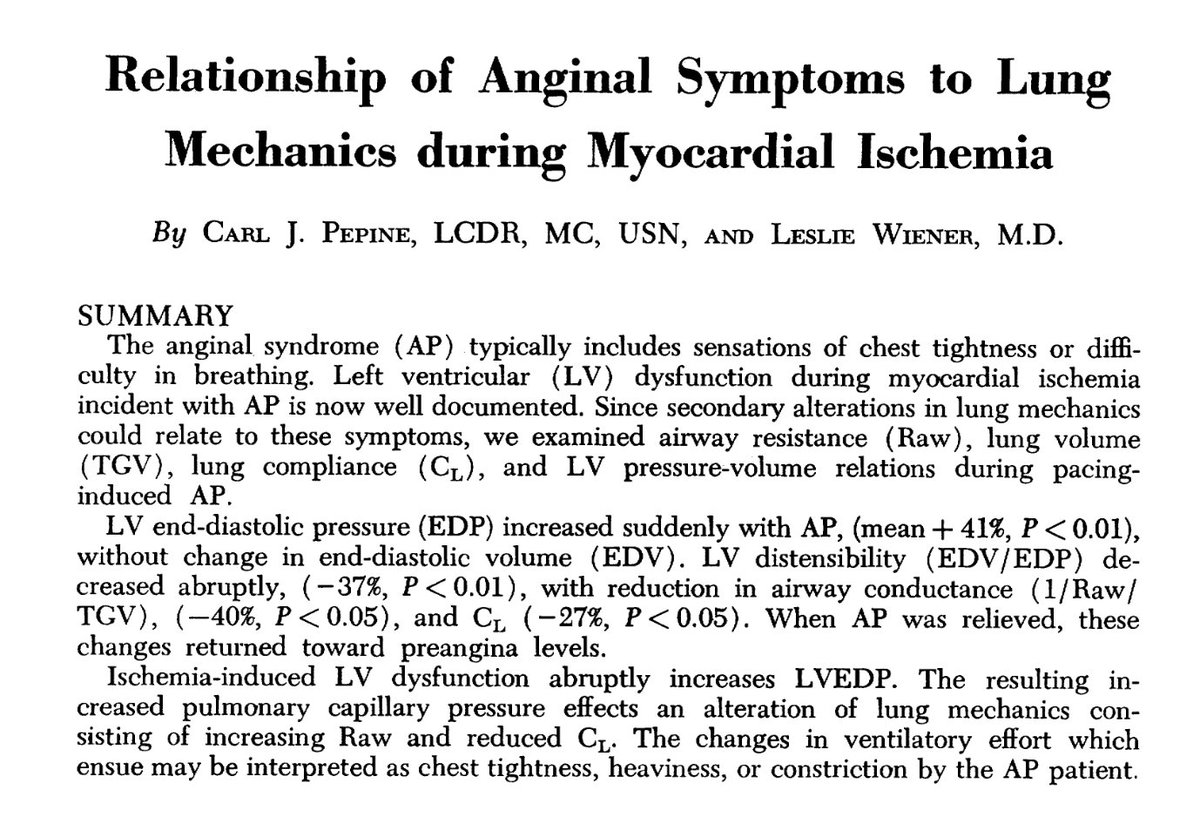
In addition, increased LVEDP results in increased LA and pulmonary pressures, causing interstitial edema. The edema may not cause other signs (e.g., crackles, hypoxia, edema on CXR), but does activate J-receptors causing the sensation of dyspnea.
So, if an increase in LVEDP is a key mechanism of “dyspnea as anginal equivalent”, one might predict that patients with anterior MI will experience dyspnea more often. There is some data supporting this prediction.
linkinghub.elsevier.com/retrieve/pii/S…


And, there is some data suggesting that outcomes are worse for those with dyspnea.
ahjonline.com/article/S0002-…

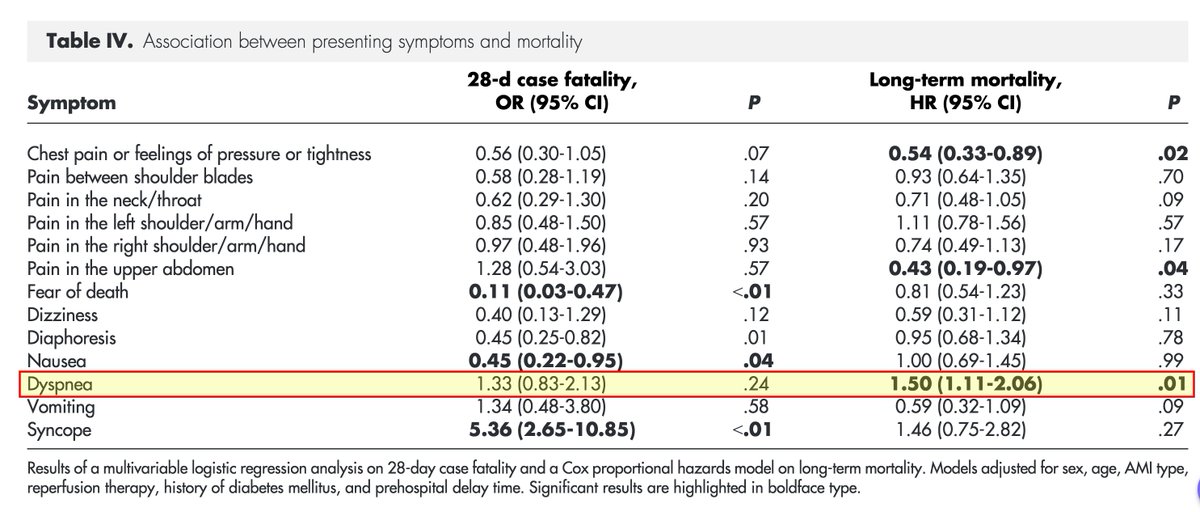
In fact, “breathlessness” has been shown to be an early indicator of coronary artery disease. See: AJC, 1989.
linkinghub.elsevier.com/retrieve/pii/0…
To close, let’s re-ask the original poll question:
Imagine a first-year medical student asks: “What is the mechanism for dyspnea in a patient who has myocardial ischemia?”
What would you answer?
I have updated the flowchart from tweet 12. Thanks to @JakeVarney02 for pointing out the error.


